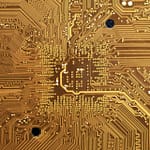Our brain is not so different from a computer after all. Here’s a closer look at the similarities between our memory and that of a computer.
An overview of the computer process

1. The computer receives its input from keyboard, mouse or stylus, microphone or camera.
2. Next these inputs are processed by the computer.
3. They remain in the computer’s memory – which is either the cache or the RAM while this processing is going on.
4. When the save button is clicked, the processed input is saved in the hard disk or the thumb drive.
5. When we need access to the saved information, we click a few buttons and the computer retrieves the information into the memory for us to view or for the computer to process that information.
Brain Function vs Computer Memory
Computer |
Brain |
Input via
|
Input via the senses
|
| Input is stored in temporary form until it is acted on |
|
| Input is saved as is, processed and then saved or completely discarded | By paying attention we move the sensory register information to short term memory |
|
|
|
|
Working Memory
Many people refer to short-term memory as working memory. Working Memory is a combination of both short-term and long-term memories that are pulled in to process them. Hence the name, working memory.
The closest computer equivalent is Virtual Memory – which can be located in physical RAM. When that is not enough, part of the hard disk is also used as virtual memory.
For more information, see the Wikipedia article on Memory
And here’s an interesting lecture from Stanford University on Learning and Memory. It is a bit long, but worth the time.

